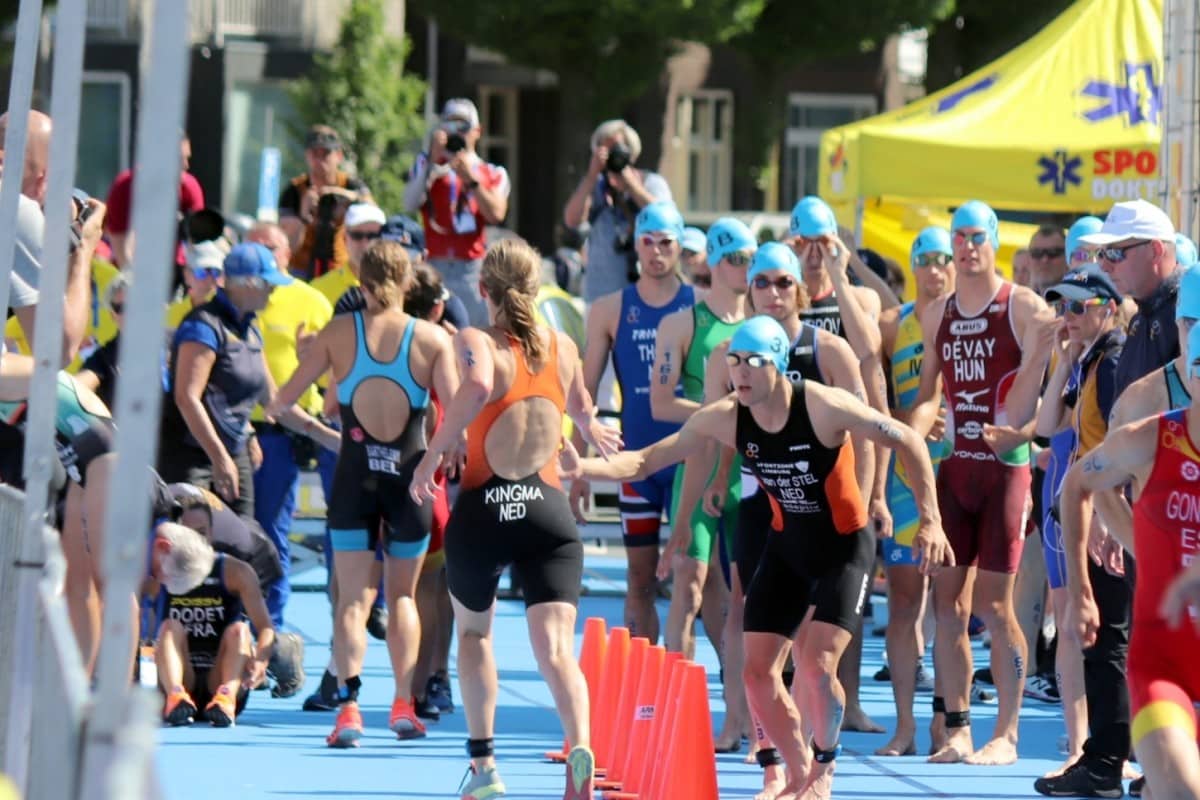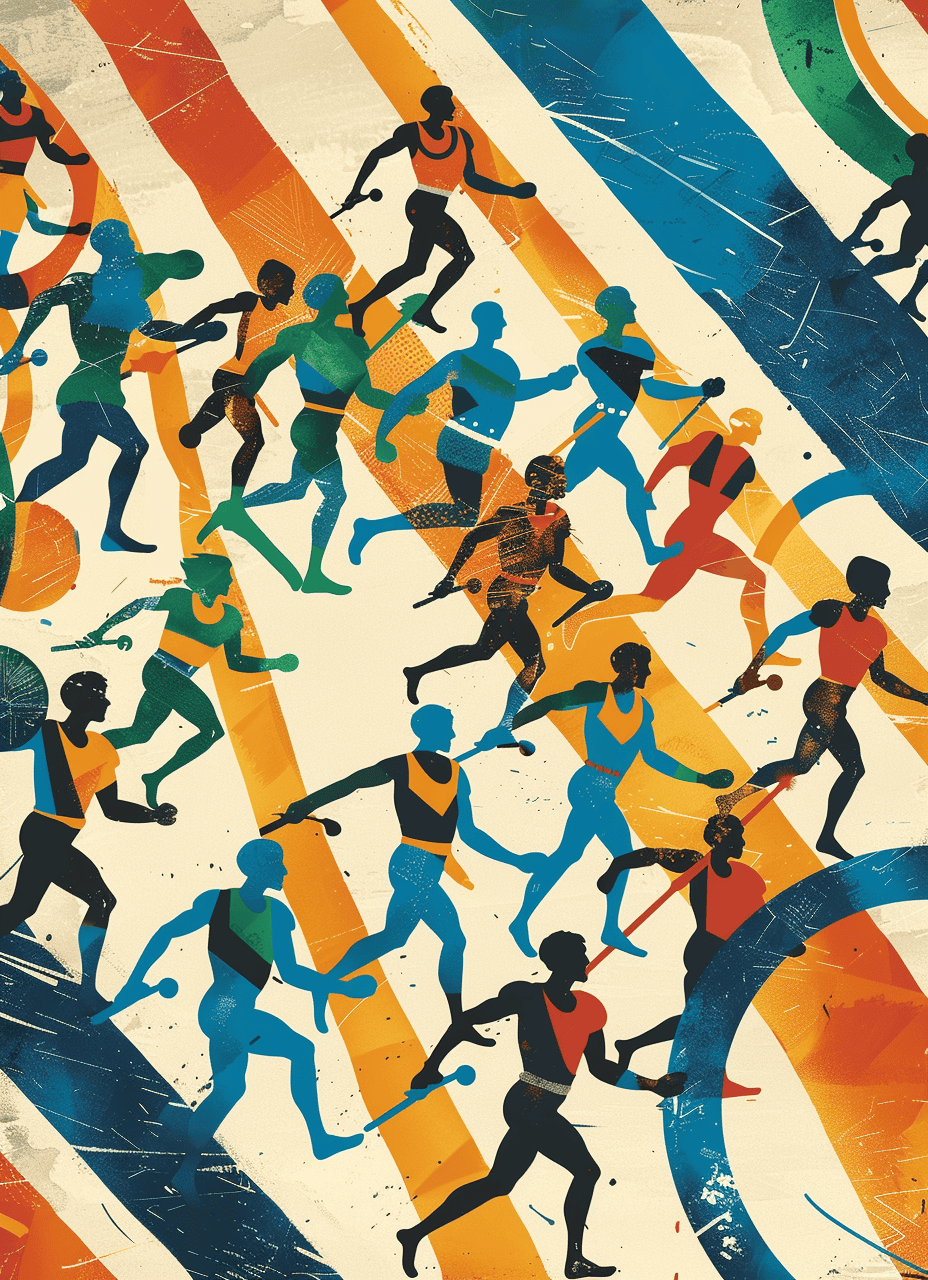
Hours of sweat and struggle (mainly against yourself) – that is the image of the triathlon. In this increasingly popular sport, there are several alternatives nowadays to the original distances of 3.8 km for swimming, 180 km for cycling and 42.2 km for running. Last weekend in Maastricht, for example. That particular marathon length is not on the program. Nonetheless, the Olympic distance (1.5 km for swimming, 40 km for cycling, 10 km for walking) as well as an even shorter distance are on the agenda. Next year, a new event is planned for the Olympic Games in Tokyo: the mixed team relay. Shorter still and therefore even more spectacular to watch.
The mixed team relay is quite different from the original triathlon, namely 250 to 300 meters of swimming, 6 to 10 kilometers of bike pedaling and 1.5 to 2 kilometers of full-on running. The triathletes alternate between women, men, women and men. Every mistake, no matter how small, is penalized immediately. Adrie Berk, technical director of the Dutch National Triathlon Association (NTB): “For instance, you can’t afford a mistake during the changeover. You miss the connection if you lose a second or two. When that happens, you’re bound to miss out on a top result for the mixed team relay. As a team, you have to keep up with the best teams so that you are able to benefit from swimming as long as possible in succession, and benefit from being able to stick together in the peloton.
You also experience the sport differently as a spectator, says Berk. “If you watch a triathlon, you can see that what they do is very clever. There is tension when a fellow countrywoman or countryman is in the front group, or during the changeovers between the sections, or during the final sprint. And those buoy turns (which the triathletes swim around, ed.) can also provoke a war. These are the great sections to watch. It’s these sections that have been quadrupled in the mixed team relay. The changeovers follow up each other quickly, that’s why teams fall behind or come back into the race. Some teams even work together at times. As a spectator, you experience the battle more intensely.”
Within the relatively young sport whereby the first Iron Man was held in 1979, the mixed team relay is not new. Previously in the German Bundesliga and the French Grand Prix team competitions, team races were held every year, however always with women and men in separate contests. As of 2009, the mixed team relay became part of the World Championships. Mixed teams were able to compete for a medal during the Youth Olympic Games five years ago. Now it is also an official Olympic event in Tokyo for the first time.
The International Olympic Committee (IOC) seems to have a preference for mixed teams in the first place. In the upcoming games there will be several sports in which they will be active: basketball, cycling, swimming, table tennis and athletics. This gender neutrality has always been the case within the triathlon, says Berk. “Not just when it comes to mixing women and men, but also when it comes to equal pay. The prize money for women is the same as for men. In that respect, triathlon is perhaps more innovative than any other sport.”
Driving each other to the next level
The team element is also of added value to the individual athlete, says Robin den Oudsten, co-founder and owner of the commercial triathlon team Squadra: “The mutual commitment and working together towards a greater goal, that all contributes to both team performance and individual performance. With this in mind, he and Koen de Haan founded Squadra in 2012, which is the Italian word for ‘team’. For his Master’s degree in Sports and Movement Innovation, Den Oudsten researched how the willingness to work together could be enhanced. “It is important not just to focus on the final performance, but also to evaluate a contest and watch together what went well and what went wrong. You learn from each other and are able to raise each other to a higher level. You can really benefit a lot from that if you have a well-balanced team. Men can learn a lot from women and vice versa. A fanatical sportswoman, for example, can occasionally be a little too fanatical. Some men are able to put that into perspective. It also works the other way around: a man who is just a little too lax will in return benefit from this fanaticism.” Den Oudsten believes that cooperation is the key to getting better when it comes to traditionally individual sports where athletes do a lot on their own.
Marco van der Stel hopes to qualify for the Olympic Games in the mixed team relay. A top six position during a World Cup series applies for an individual qualification. “That is not realistic for me. I have a better chance with the mixed team relay. The first seven teams go through automatically and I have enough points as an individual.” Together with Rachel Klamer, Maya Kingsma and Jorik van Egdom, he makes up the Dutch team which won bronze during the European Championship in Weert last June. The team is now seventh on the world ranking list.
Ver der Stel has noticed that a group performance is different from an individual performance: “Actually, you all have your very own mini triathlon. But you can work a bit harder because you know someone is waiting for you. Or when someone makes a small mistake and someone else solves it, then that’s nice too.”
Triathlon figures:
Number of NTB 2009 members (both regular members and athletes who participated in a competition via a day license): 16.000
Number of NTB 2018 members (both regular members and athletes who participated in a competition via a day license): 36.000
(source the Dutch National Triathlon Association)








